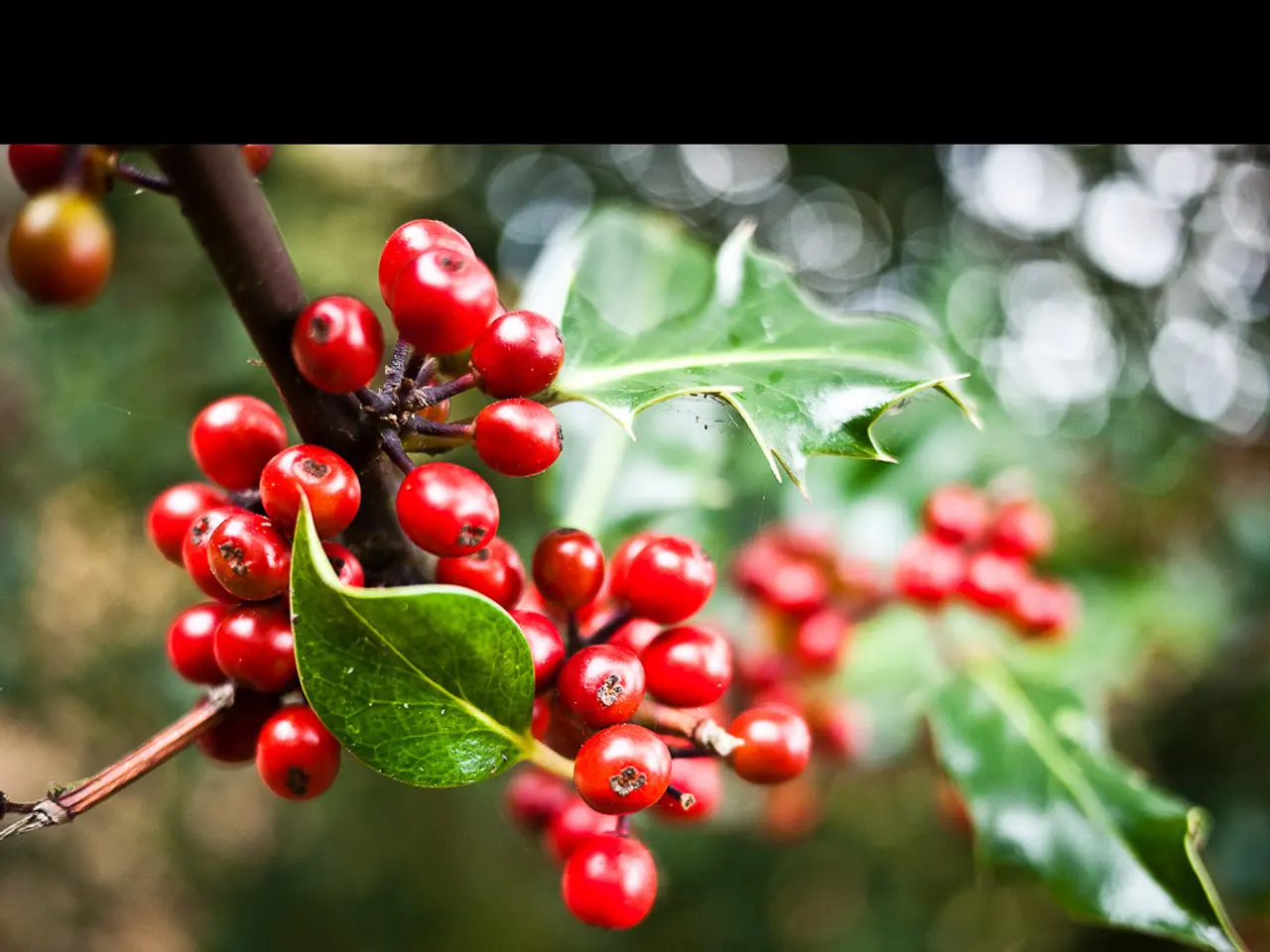Guide to Cultivating, Gathering, and Capitalizing on the Superfood from the Amazon - Acai Berry
In the heart of the Amazon rainforest, the açaí palm tree (Euterpe oleracea) thrives, producing small, dark purple berries that are becoming a global sensation [1][5]. The cultivation of açaí outside the Amazon, such as in Florida using specialized soil technology, is still in its early stages due to the plant's sensitive growing conditions [1].
The process of harvesting ripe açaí berries involves picking them directly from the palm clusters. These berries spoil rapidly after harvest, making fresh açaí a rarity outside the native region. To preserve their nutritional value, they are processed promptly, often through flash-freezing, pureeing, or drying [1][5].
Açaí berries have found a home in various industries:
Food and Beverage: Known as a "superfruit," açaí is incorporated into smoothies, bowls, juices, shakes, and dietary supplements. Valued for its high antioxidant content and nutrients like vitamins A, C, E, calcium, and potassium [1][2][3], it has become a popular choice for health-conscious consumers.
Cosmetics and Skincare: The antioxidant and vitamin-rich properties of açaí make it an ideal ingredient in creams and skin products aimed at enhancing skin health and radiance [2][4]. In skincare and hair care products, açaí oil is used for its moisturizing, anti-aging, and anti-inflammatory properties, helping maintain skin elasticity, reducing the appearance of fine lines, and restoring a healthy glow. Additionally, it enhances shine, reduces frizz, and nourishes the scalp in hair care products.
Health and Wellness: Açaí is marketed in dietary capsules or tablets for detox, heart health, and strengthening hair, among other benefits [2][3]. The berries contain essential fatty acids, including omega-3, omega-6, and omega-9, which contribute to their health benefits.
Industrially, specialized processing plants equipped for handling açaí's short shelf life are essential. This requires capital investments and operational infrastructure tailored for the fruit's delicate nature. The rapid degradation has led to reliance on frozen or powdered forms in global markets [1].
Açaí palms thrive in well-drained, acidic soils rich in organic matter. Organic fertilizers, such as composted manure, can be applied for soil fertility enhancement. The palms typically begin fruiting 3 to 5 years after planting, and they are planted with a distance of 5 meters between plants for optimal growth.
The growing demand for sustainable and plant-based alternatives in cosmetic formulations has made açaí a preferred choice among eco-conscious brands. The açaí berry has made a significant impact in the beauty and personal care industry, offering both nutritional and economic value. Its cultivation outside the Amazon continues to expand, contributing to the global market for this versatile and health-boosting fruit.
- The nutritional açaí berries, known for their high antioxidant content and vitamins, find their place in the food and beverage industry, where they are incorporated into various products like smoothies, juices, and dietary supplements, catering to health-conscious consumers.
- In the cosmetics and skincare sector, açaí's antioxidant and vitamin-rich properties make it an ideal ingredient for creams, lotions, and skincare products, promoting skin health, radiance, and reducing signs of aging.
- As a part of the health and wellness industry, açaï is marketed in capsules or tablets, showcasing potential benefits for detox, heart health, and hair strength, with essential fatty acids like omega-3 contributing to its health advantages.




